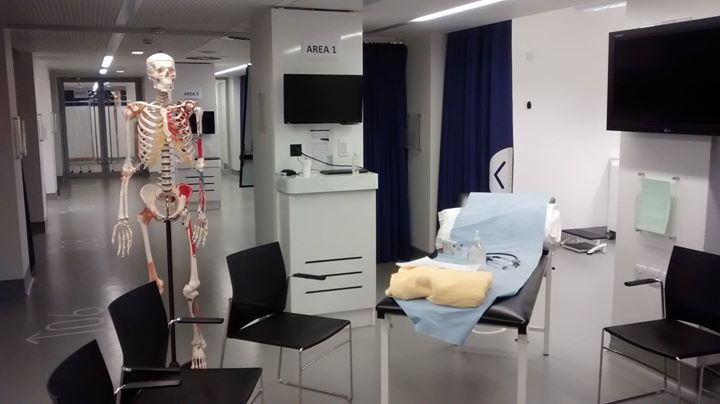The back of the third-floor Stopford building is a place every medical student will visit quite regularly during the first two years of the course. The dissection room tutorials are unlike any other session you will have in Phase 1 of the course. It is a massive room, walls covered with anatomy posters, prosections and preparations of various tissues. Perhaps the most striking of all are the tables spread across the room giving off the potent smell of formaldehyde. I don’t think there is anything quite like dissecting a cadaver for the first time – a mixture of curiosity and repulsion, of excitement and humility. The University of Manchester is one of the last remaining places to offer cadaveric anatomy teaching which, in my opinion, is second to none in giving students awareness of the spatial arrangement of organs and the relationship between them. It is a somewhat gruelling experience and many medical students suffer some sort of adverse reaction to the sight. However, by your second or third session you will be used to it all and I must say the anatomy sessions very quickly became my favourite part of the week.
So, how to prepare for your first Anatomy session? Bringing your white coat and anatomy book would be a good start! You won’t be allowed anything else in the room though, so no point bringing much else. It is also a good idea to go through the relevant chapter in the anatomy book before your session so you know what you are looking at each week. Getting one of the anatomy colouring books as a supplement helped me massively to get my head around things as I found the ‘filling-the-gaps’ exercises to be not quite as useful on their own. The Acland’s anatomy videos (http://aclandanatomy.com/) that are available through the University are also a great resource for a quick review of specific areas prior to sessions.
Something else I would make sure to do before anatomy sessions is to have some food and drink as the sessions can be long. Hangovers are made way worse in that room so think twice about that too. You have to stand around a dissection table for a couple of hours while going through various anatomical areas, so being in a good state will always be helpful. The smell does not help either and funnily I used to get hungry from it – bizarre, but I’ve heard other students share this thought, so I guess it happens.
Finally, it is a special honour to receive such an opportunity from another human being. These are, after all, the bodies of husbands and wives, mothers and fathers. Even towards the end of my second year I still felt very much the same mixture of emotions as I did in my first dissection sessions. It was a great touch that towards the end of each academic year, the School organised a memorial to honour those who donated their body for medical education and their families. I cannot urge you enough to attend at least once, as it is truly a heartening occasion.
I hope reading this will help you in some shape or form. Let me know about your first experience of the dissection room. Do you have any top tips / wish-I-knew-this things?
Rayko Kalenderov
Year 5 Medical Student
Manchester Medical School

